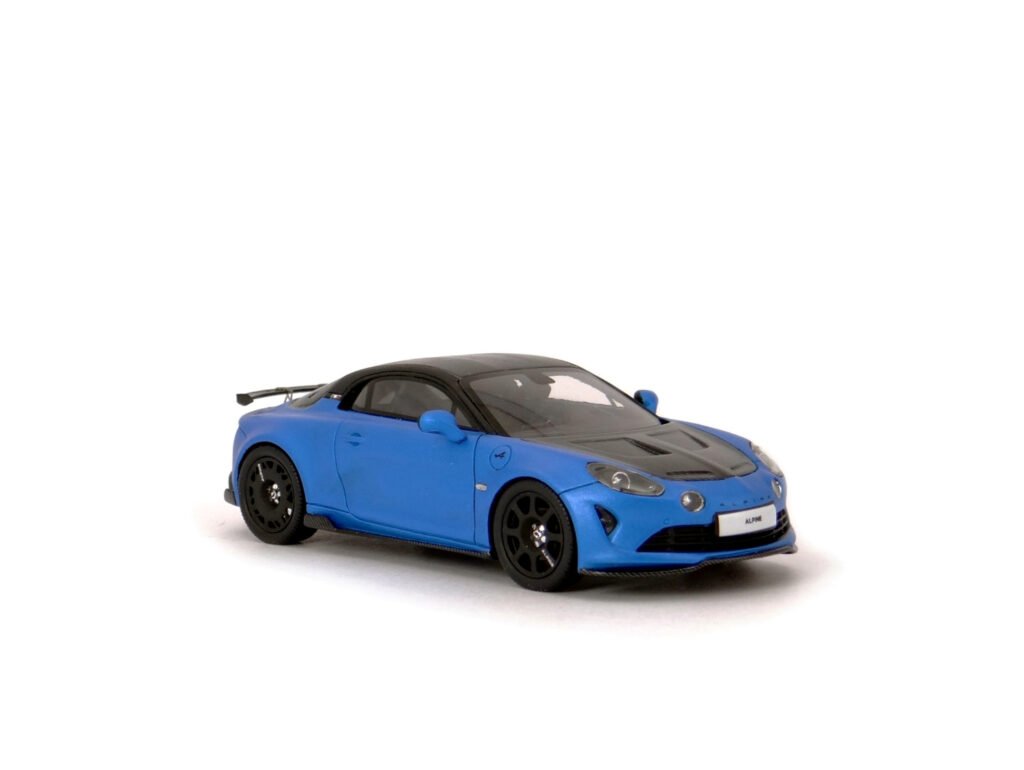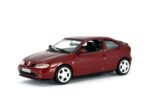Każde szanujące się sportowe coupe prędzej czy później pojawi się w jeszcze bardziej sportowej wersji. To samo przytrafiło się Alpine A110. Model R to najbardziej wyczynowe wydanie modelu, ale zrobione według trochę innej metody niż zwykle.

Długo wyczekiwana reaktywacja kultowej marki Alpine (część koncernu Renault), w końcu nastąpiła w 2017 roku. Od tego momentu powoli zyskiwała na popularności. Francuzi, zachęceni zarówno wynikami sprzedaży jak i chęcią podgryzienia Porsche, zaprezentowali pod koniec 2022 roku torową wersję modelu A110. Samochód dostał przyrostek „R” w nazwie (skrót od słowa radicale), co wyraźnie podkreśla jego charakter. Pierwsze jazdy testowe Alpine A110 R zorganizowano na torze Jarama pod Madrytem i oceny dziennikarzy były bardzo pozytywne.
W przeciwieństwie do większości producentów, Alpine nie zdecydowało się na podniesienie mocy silnika w swoim wyczynowym modelu. Według badań przeprowadzonych przez firmę, nie tego oczekiwali klienci. Brak zwiększenia mocy motywowano również tym, że większa moc zwiększa masę i emisję CO2, a to podnosi koszty. A110 R wykorzystuje więc ten sam napęd co modele S i GT; 300-konne, czterocylindrowe 1.8 turbo połączone z siedmiobiegową, dwusprzęgłową skrzynią.
Kluczem do wyczynowości Alpine A110 R jest niska masa własna. Auto waży tylko 1082kg, o 34kg mniej od A110 S. Choć 34kg to z pozoru niewiele, to już podstawowe A110 jest leciutkie, więc nie było wiele miejsca na cięcia. Włókna węglowe okazały się tutaj prawdziwymi sprzymierzeńcami. Wykonano z nich maskę, dach, progi, tylny spolier oraz specjalną kopułę zastępującą tylną szybę. Elementy nadwozia dopracowano też aerodynamicznie, pod okiem specjalistów z Alpine F1.

Patrząc na A110 R nie sposób nie zauważyć różnicy w wyglądzie między przednimi a tylnymi kołami. Jest to zamierzone. Felgi na froncie są bardziej otwarte w celu lepszego chłodzenia hamulców. Tylne z kolei są mocniej zamknięte dla poprawy aerodynamiki. Same obręcze wykonano w całości z włókna węglowego. To zaawansowane rozwiązanie używane głównie w supersamochodach jak np. Koenigsegg, pozwoliło zaoszczędzić aż 12.5kg!
Zmian dokonano też oczywiście tam, gdzie nikt tego nie widzi. Zmieniono zestrojenie układu kierowniczego, skrzyni biegów i zawieszenia (które obniżono też o 10mm). Pozwoliło to jeszcze bardziej poprawić prowadzenie samochodu. W połączeniu z niską masą i zrywnym silnikiem, daje to niezaprzeczalną frajdę z jazdy.
Środek Alpine również jest bezkompromisowy. Cały wyłożony mikrofibrą, z fotelami kubełkowymi z cienkiej karbonowej skorupy wyposażonymi w sześciopunktowe pasy Sabelt. Co ciekawe, pasy jako pierwsze tego typu na świecie dostały homologację drogową!
Po tych wszystkich modyfikacjach i ulepszeniach, A110 R przyspiesza do 100km/h w 3,9 s i osiąga maksymalnie 285 km/h. To poprawa w stosunku do wersji A110 S o odpowiednio 0,3 s i 25 km/h. Summa summarum Alpine udowodniło, że do wybitnych osiągów nie zawsze potrzeba dodatkowej mocy.

O miniaturze – Alpine A110 R
Model Alpine A110 R wykonało Schuco. Firma znana z modeli metalowych (tzw. diecast), wprowadziła niedawno do oferty serię miniatur wykonanych z żywicy, nazwaną PRO.R43. Model Alpine A110 R pochodzi właśnie z tej serii. Jak przystało na żywiczny modelik, mamy do czynienia z najwyższą jakością.
Idealne proporcje nadwozia, mnogość detali jak również wysoka jakość odwzorowania. Gdzie nie spojrzeć – jest świetnie. Producentowi fenomenalnie wyszedł matowy niebieski lakier oraz karbonowe panele nadwozia. Z reguły nie jestem ogromnym fanem sportowych samochodów, ale muszę przyznać że ten modelik wygląda super.
Jeśli miałbym się do czegoś przyczepić, to… nadgorliwość producenta w odwzorowaniu detali. Taki zarzut zdarza się bardzo rzadko, ale tutaj jest zasadny. Schuco odwzorowało bowiem lusterko wsteczne, którego prawdziwy samochód nie posiada. Mały babol, ale nie wpływa on zupełnie na ogólną ocenę miniaturki. Jest znakomita!
Na koniec, chciałbym Was zaprosić do śledzenia MiniAutomobili in Instagramie i Facebooku!
*** ENGLISH ***
Every respectable sports coupe will sooner or later get an even sportier variant. The same happened to the Alpine A110. The R model is its most extreme iteration, but done using a slightly different method than usual.

The long-awaited resurrection of the Alpine brand (part of Renault group), finally took place in 2017. Since then, it has been slowly gaining popularity. The French, encouraged by sales figures as well as looking to challenge Porsche, presented the track-focused version of the A110 at the end of 2022. The car received the “R” suffix in its name (short for radicale), which explicitly highlights its character. The first drives of the Alpine A110 R were organised on the Jarama track near Madrid and journalists’ feedback was very positive.
Unlike most manufacturer’s, Alpine didn’t increase the power of its high-performance model. According to the research done by the manufacturer, it wasn’t what the customers expected. Maintaining the power output was also motivated by the fact that higher power increases mass and CO2 emissions, consequently leading to higher costs. Hence, the A110 R uses the same powertrain as the S and GT models; a 300 PS, four-cylinder 1.8 turbo mated with a seven-speed dual-clutch gearbox.
The key to the performance of Alpine A110 R is its low kerb weight. The car weighs just 1,082kg, a 34kg drop over the A110 S. While 34kg doesn’t seem like a lot, the standard A110 is already an ultralight car, so there really wasn’t that much to cut from. Carbon fibre was a real friend here. It was used to make the bonnet, roof, sideskirts, rear spoiler as well as the engine cover in place of the old rear-window panel. The aerodynamics of the body panels were also fine-tuned with the help of Alpine F1 specialists.

Looking at the A110 R, you can’t help to notice a difference in appearance between the front and rear wheels. This is on purpose. The front wheels are more opened to allow better cooling of breaks. Meanwhile, the rear are more closed-up to reduce drag. The wheels themselves are fully made from carbon fibre. This advanced technology used primarily in supercars, such as the Koenigsegg, helped to reduce the weight by as much as 12.5kg!
Of course, changes were also made to areas which the eye doesn’t reach. The steering, transmission and suspension (which was lowered by 10mm), were all re-calibrated. This allowed to improve the car’s handling even further. Coupled with a light weight and a punchy engine, it undoubtedly makes for a thrilling driving experience.
The Alpine’s interior is also uncompromising. Fully carpeted in microfiber and fitted with carbon seats fixed with six-point Sabelt harnesses in place of inertia-reel belts. Interestingly, they are the first harnesses of this kind in the world to be approved for road use!
After all the modifications and advancements, the A110 R accelerates to 62mph in 3,9 s and reaches a top speed of 176mph. That’s an improvement on the A110 S model by 0.3 s and 15 mph respectively. All in all, Alpine proved that you don’t always need extra power to get outstanding performance.

About the miniature – Alpine A110 R
The model of Alpine A110 R was done by Schuco. The company known for diecast models recently introduced a series of resin miniatures, called PRO.R43. The model of Alpine A110 R comes from this series. As expected from a resin model car, we have a product of the highest quality.
Ideal body proportions, a multitude of small detail as well as a high level of replication. Wherever you look – it’s great. The manufacturer did a phenomenal job of the matt-blue paintwork and carbon body panels. In general, I am not a huge fan of sports cars, but I must admit that this scale model looks superb.
If I was to fault anything, it would be…the manufacturer’s over-diligence in replicating detail. Such an allegation happens very rarely, but it is justified in this case. Schuco replicated the rear-view mirror, although it doesn’t actually exist on a real car. A small mishap, but it doesn’t influence the model’s overall rating in any way. It is absolutely brilliant!
Lastly, I would like to invite you to follow MiniAutomobile on Instagram and Facebook!
















